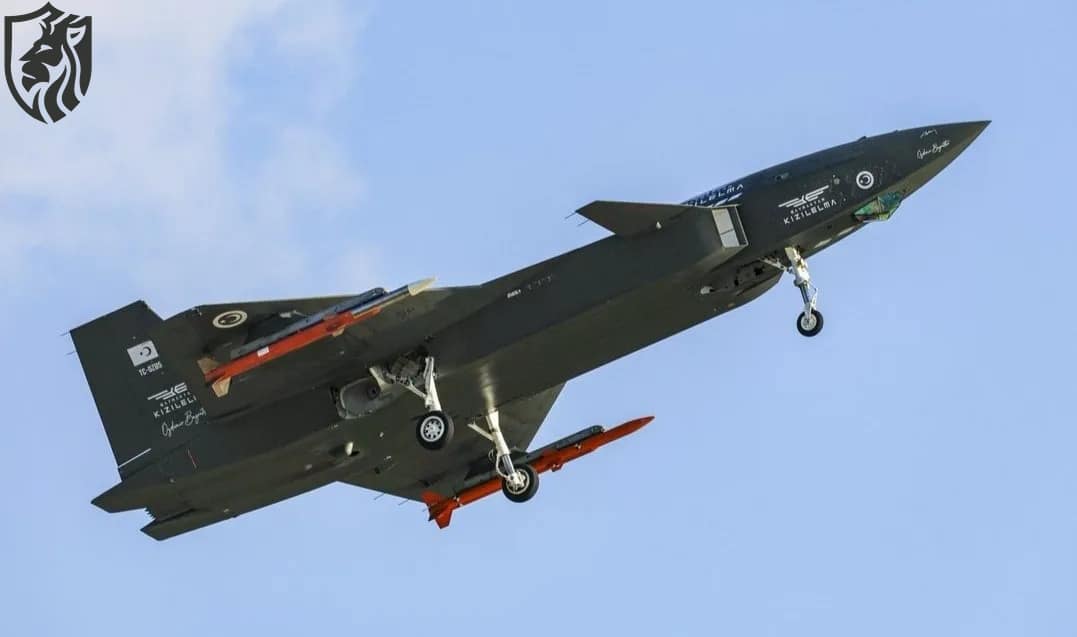
Kizilelma Tests Ukrainian Engine with Guided Mk.82
Programme update
Kizilelma Ukrainian engine tests have moved from ground work to sustained flight evaluations with the third prototype i.e. (PT-3). Baykar released fresh footage showing the reconnaissance strike UCAV carrying a 250 kg Mk.82 fitted with the TEBER-82 guidance kit. Engineers are logging aerodynamic data and flight parameters with weapons onboard to validate the new configuration during active flight.
Weapons integration: why an external pylon?
Kizilelma Ukrainian engine tests also include representative stores on the SADAK-4T external pylon. Although the airframe features internal bays for low observability, early envelope work often prefers external carriage. This approach simplifies telemetry, reduces integration risk, and, moreover, speeds up data collection before moving weapons inside the bay.

Powerplant shift to AI-322F
Kizilelma Ukrainian engine tests pivot on the integration of Ivchenko-Progress’s AI-322F afterburning turbofan, replacing the earlier AI-25TLT used on PT-1 and PT-2. During the second test flight, Turkish engineers examined take-off behaviour with afterburner engaged. With higher thrust, the UCAV should approach transonic performance, therefore improving climb, dash, and manoeuvre margins.
Mid-subsonic envelope expansion
Kizilelma Ukrainian engine tests recently explored aerodynamics and propulsion at Mach 0.6. These runs validate control laws, thermal margins, and structural loads with a heavy Mk.82/TEBER-82 store. The team has also flown with smaller munitions—TOLUN glide weapons, analogous to the American GBU-39/B SDB—demonstrating a scalable strike fit for different target sets.
Specs at a glance
Kizilelma Ukrainian engine tests keep the airframe’s published baselines intact: a 10 m wingspan, 14.5 m length, and 3.5 m height. The UCAV targets a maximum take-off weight of 8,500 kg and a 1,500 kg payload. Service ceiling stands at 7,600 m, while the maximum flight altitude cited is 13,700 m. Endurance exceeds three hours, and all phases—taxi, take-off, cruise, approach, and landing—run autonomously.

Roadmap: subsonic to supersonic
Kizilelma Ukrainian engine tests underpin a family roadmap: subsonic, transonic, and ultimately supersonic variants. The subsonic cruise figure remains ~Mach 0.6 with a quoted top speed near Mach 0.9 for the higher-powered configuration. As the aerodynamic refinements mature, the programme should gain manoeuvre authority at higher dynamic pressures, which, in turn, broadens options for BVR escort, maritime strike, and SEAD roles.
Sensors and mission systems
Kizilelma Ukrainian engine tests lead into a production fit that is expected to include an EO/IR targeting suite and a multi-mode AESA radar. Together with precision-guided bombs and compact glide munitions, that sensor mix will enable wide-area search, precise target identification, and multi-target attack under contested conditions.









